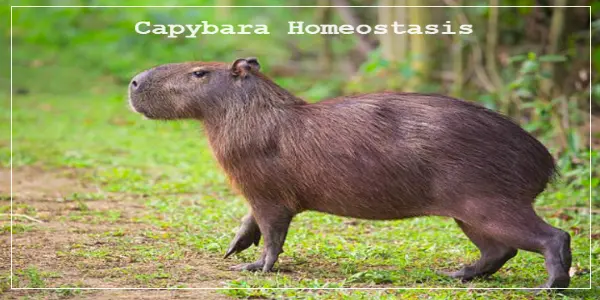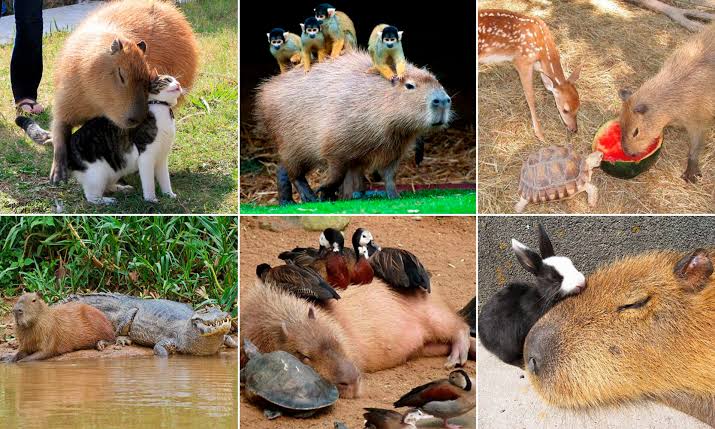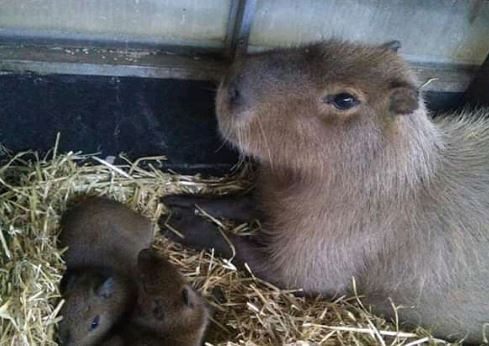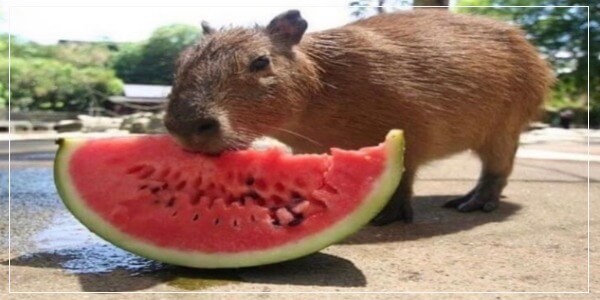Capybara Homeostasis
Capybaras are the world’s largest rodents and are known for their social and laid-back personalities. As with all living organisms, they require homeostasis to maintain their health and well-being. Homeostasis is the process by which an organism maintains a stable internal environment despite changes in its external environment. Capybaras, being native to the tropical regions of South America, face a range of challenges in maintaining their homeostasis, such as temperature fluctuations, predation, and disease.
However, there are a number of ways that capybaras can maintain their homeostasis and stay healthy, including proper nutrition, social interaction, exercise, and adequate sleep. In this way, capybaras can continue to thrive in their unique ecosystem and serve as a valuable and fascinating part of the natural world.
This article will discuss the ways in which capybaras maintain homeostasis and how their unique features help them to achieve balance.
Why Do Capybaras Maintain Homeostasis?
1. Homeostasis is essential for Capybaras to survive and keep their bodies functioning properly.
2. The process of maintaining homeostasis helps balance the body’s internal temperature, blood sugar, and other essential aspects of its physiology.
3. This allows Capybaras to stay healthy and energetic to perform daily activities such as grazing and swimming.
4. Homeostatic regulation provides Capybaras with a consistent body balance so that environmental changes will not cause them serious harm.
5. If Capybaras are unable to maintain homeostasis, it can lead to dehydration, fatigue, and other serious conditions.
6. Homeostasis keeps the heart rate, breathing rate, and other vital signs in the optimal range for Capybaras.
7. Proper homeostasis helps capybaras regulate the amount of water and sodium in their bodies to prevent dehydration and sodium overload.
8. Maintaining homeostasis also helps keep their metabolisms running efficiently.
9. Homeostasis also helps Capybaras detect when they are too hot or too cold and respond appropriately to changing temperatures.
10. Homeostatic regulation is essential for Capybaras’ overall well-being and helps ensure their long-term health and survival.
What Affects Capybara Homeostasis?
- Temperature: Capybaras are sensitive to temperature changes, and extremes in either heat or cold can affect their homeostasis. They need to maintain a stable body temperature to ensure proper metabolic function.
- Water: Capybaras are semi-aquatic animals, and water plays an important role in their homeostasis. They rely on water for thermoregulation, and hydration, and to maintain their skin and fur health.
- Diet: A balanced diet is essential for capybara homeostasis. They are herbivores and require a diet that is high in fiber and low in fat to ensure proper digestion.
- Habitat: Capybaras are native to South America, and their habitat affects their homeostasis. They require access to open areas to forage, as well as areas with cover for protection.
- Predation: Predation is a significant threat to capybaras, and it can affect their homeostasis. Fear and stress associated with predation can lead to changes in behavior and physiology, which can impact their health.
- Social interaction: Capybaras are highly social animals and require social interaction for their homeostasis. Social isolation can lead to stress and impact their behavior and physiology.
- Disease: Diseases can affect capybara homeostasis, and they are susceptible to a range of diseases, including those caused by parasites, bacteria, and viruses.
- Exercise: Regular exercise is important for capybara homeostasis. It can help maintain their physical fitness, improve digestion, and reduce stress.
- Sleep: Capybaras require adequate sleep for their homeostasis. Sleep is essential for tissue repair, immune system function, and overall health.
- Human interaction: Human interaction can affect capybara homeostasis. Encounters with humans can cause stress and changes in behavior, which can impact their health.
Steps to help Capybaras maintain better homeostasis
1. Provide a constant temperature of around 75°F and high humidity.
2. Feed your capybara a diet of high-quality hay, leafy greens, and low-fat treats.
3. Make sure your capybara has access to a large pool of fresh, clean water at all times.
4. Exercise your pet regularly, letting them swim, run, and explore in a safe, secure environment.
5. Familiarize yourself with the common illnesses and diseases of capybaras and practice preventative care.
6. Trim your capybara’s claws regularly to help prevent scratching and prevent potential injury.
7. Train your pet to recognize its name and respond to common commands.
8. Take your pet to the vet regularly to ensure optimal health.
9. Regularly clean and groom your pet, brushing them and bathing them as needed.
10. Provide your capybara with enrichment activities, such as hideaways, browsing materials, and toys.
11. Get your pet used to being handled, so they can be comfortably restrained when necessary.
12. Replace the water regularly with fresh, clean water and disinfect your capybara’s environment regularly.
13. Avoid feeding your capybara any foods that are high in sugar or fat.
14. Keep your capybara’s environment clean, sanitized, and free from potential parasites.
15. Ensure your
Methods Capybaras used in maintaining homeostasis.
Capybaras use a variety of methods to maintain homeostasis, which is the process by which they maintain a stable internal environment despite changes in their external environment. Here are 10 methods that capybaras use to maintain homeostasis:
- Thermoregulation: Capybaras are able to regulate their body temperature by basking in the sun, seeking shade, or entering the water to cool down.
- Water intake: Capybaras consume water to regulate their body temperature, stay hydrated, and to help with digestion.
- Balanced diet: Capybaras are herbivores and require a diet that is high in fiber and low in fat to maintain proper digestion and nutrient absorption.
- Social interaction: Capybaras are highly social animals and require social interaction to maintain mental and emotional health.
- Adaptation: Capybaras are able to adapt to changes in their environment, such as seasonal changes, to maintain homeostasis.
- Exercise: Regular exercise, such as swimming or walking, helps capybaras maintain muscle and joint health, and also helps with digestion.
- Sleep: Capybaras require adequate sleep to restore and repair their bodies, improve their immune function, and promote mental health.
- Respiration: Capybaras use respiration to maintain homeostasis, by exchanging gases and regulating their carbon dioxide levels.
- Sensory perception: Capybaras use their senses to detect changes in their environment, and they adjust their behavior to maintain homeostasis in response to these changes.
- Elimination: Capybaras excrete waste products through urination and defecation, which helps maintain proper chemical balance in their bodies.
Capybaras use a variety of physiological and behavioral methods to maintain homeostasis. These methods help capybaras adapt to their environment, maintain proper bodily functions, and stay healthy in the face of environmental challenges.
Conclusion
In conclusion, capybara homeostasis is a fascinating topic that highlights the remarkable adaptability of these incredible animals. Through their diet, habitat, social interaction, exercise, and sleep, capybaras are able to maintain a stable internal environment that allows them to thrive in their natural habitat. However, as with all living organisms, they face a range of challenges, from temperature fluctuations to disease, that can impact their homeostasis. By understanding the factors that affect capybara homeostasis, we can work to preserve and protect these unique and important animals, ensuring that they continue to serve as an important part of the natural world for generations to come.


![How Long Do Capybaras Live? - [Answered] How Long Do Capybaras Live](https://capybaratips.com/wp-content/uploads/2023/03/Capybara-Pix-250x200.webp)
![Why Do Capybaras Not Have Tails? - [Answered] Why Do Capybaras Not Have Tails](https://capybaratips.com/wp-content/uploads/2023/03/Capy-Tail-250x200.webp)


![Capybara Meat And Its Culinary Uses - [Every You Should Know] Capybara Meat & Culinary Uses](https://capybaratips.com/wp-content/uploads/2023/03/Capybara-meat-250x200.webp)


